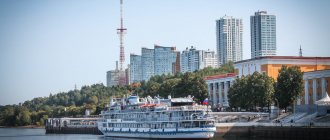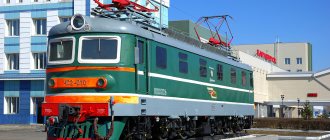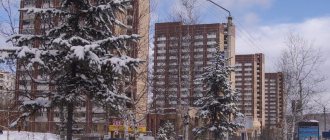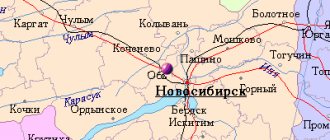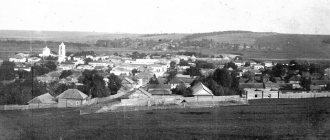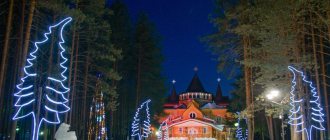The first thing a person who comes to Chaplygin by train sees is the inscription “Ranenburg” on the railway station building. Over the years, the old name of the city has not been forgotten and now coexists with the new one almost on equal terms. The local newspaper is called "Ranenburg Bulletin", there is a shopping center in the city center, and tourism in the city and region is entirely built on the historical past. In 2006, a referendum was even held in Chaplygin on returning the historical name, but supporters of this idea were defeated.
Photo: Sofya Urmancheeva
Story
Chaplygin is located in the Lipetsk region, about a five-hour drive from Moscow. It owes its original name to the fortress from the time of Tsar Peter.
In the 17th century, a small village appeared on the site of the future city. In 1695, a wooden traveling house was built here for Peter I, in which the Tsar stayed on his way from Moscow to the south. In 1702, he built a fortress near the village and named it Oranienburg. The owner of these territories was Peter's friend, Prince Alexander Menshikov. Over time, the name of the fortress extended to the settlement. Over the course of several decades, the name Oranienburg was shortened to Raninburg, and in 1778, Empress Catherine II declared the village the district town of Ranenburg, with an “e”. Local residents were actively involved in trade, and in the 19th century Ranenburg became a wealthy merchant town. In 1890, a railway station of the same name was built here.
1 / 2
Ranenburg, 1917 / Photo from the archives of the Chaplyginsky Museum of Local Lore
2 / 2
Photo from the archives of the Chaplyginsky Museum of Local Lore
A huge number of settlements were renamed in the USSR. More than 250 cities and villages across the country were named in honor of Lenin alone. The Soviet government got rid of most German-language and German-sounding names, and in 1941 the Autonomous Soviet Socialist Republic of Volga Germans was abolished, and dozens of its colonies received new names. After the war, there was a broad campaign to rename settlements in the part of the territory of East Prussia that was transferred to the Soviet Union, which became the Kaliningrad region. In 1948, Ranenburg also lost its name. It was renamed Chaplygin in honor of the mechanical physicist Sergei Chaplygin, who was born in the city in 1869.
The city respects its own history. Photographs of pre-revolutionary Ranenburg and its inhabitants have been preserved; they are regularly published in the LiveJournal “Notes of a Ranenburger”. In 2004, the city restored one of the fortress buildings - the house of Alexander Menshikov. Now it houses a local history museum. The house numbers in the center of Chaplygin show two street names: the official current one and the pre-revolutionary one. A few kilometers from the city, the Peter and Paul Monastery, a monastery founded by Prince Menshikov and ruined by the Bolsheviks, has been restored for years.
Historical Museum
A popular place in the city is the Historical Museum. As the name suggests, this is a museum. It was built on an area near a fortress called Oranienburg. As we know from history, Peter 1 himself gave this fortress to Menshikov for his services. And that is why this place is often called the Menshikov House and the museum was built here.
In the historical museum you can find which famous people lived here, as well as a lot of information that tells the history of the fortress, as well as its role, because as is known, the fortress greatly helped in the development of the city and left a big mark on history.
The museum also hosts various exhibitions. So for history buffs or simply for those who are interested in the history of the city, I highly recommend visiting this Historical Museum.
Location: Sovetskaya street - 43.
Referendum
In 2006, a referendum was held in Chaplygin on returning the historical name to the city. The main initiator of the project was the late Yuri Telyakov, at that time the head of the local council of deputies and director of the Chaplyginsky starch plant. If supporters of the return of Ranenburg had won, the city would have become the fifth Russian “burg” along with St. Petersburg, Yekaterinburg, Orenburg and Shlisselburg. All of them also lost their historical names during the Soviet years, and then were renamed back.
But the majority of the townspeople who came to the polling stations were in favor of preserving the name Chaplygin, and the referendum itself was declared invalid due to low turnout. 37% of its participants voted for the historical name. “Our main mistake was that we were unable to coordinate our actions. It was all swan, crayfish and pike, everyone had their own opinion. The joint work did not work out, and because of this there was no uniform information dump,” says one of the members of the referendum initiative group, local historian Alexander Bogdanov. Due to internal disputes, the authors of the project were unable to convince the townspeople that the name should be returned. In addition, the head of the Chaplygin administration did not support the idea of returning the name Ranenburg, and, according to Bogdanov, the administrative resource worked against their team.
Assumption Cemetery Church
The Assumption Cemetery Church was built in 1731 with money from residents of the city of Chaplygin. Currently closed as it is in serious condition and is a historical monument.
The Assumption Cemetery Church is a stone church with a bell tower. I think it’s worth a visit just for fun.
Tourist Ranenburg
The peculiarity of Chaplygin is that its main attraction, the Peter the Great fortress of Ranenburg, has not survived to this day. A model of the fortification can be seen on the ground floor of the local history museum. Even a photograph from the end of the 19th century has survived, in which some of the fortress’s buildings are visible. A schematic image of its bastions adorns the flag of the Chaplyginsky district. Today, a city park is located on the site of the complex.
1 / 3
Photo: Sofya Urmancheeva
2 / 3
Photo: Sofya Urmancheeva
3 / 3
Photo: Sofya Urmancheeva
Alexander Bogdanov believes that returning the city to its former name would allow, in particular, to raise money for the development of the fortress: “The Ranenburg fortress would be an iconic tourist attraction if it were restored. But it can be restored, and there was a conversation about this.”
Director of the Chaplyginsky Tourism Center Valentina Povaluka also notes the importance of returning the old name to “continue the promotion of Ranenburg as Peter’s fortress, the first in Russia, built according to all the rules of European fortification.” Thanks to the development of tourism in the region in recent years, the word “Ranenburg” has practically become a tourist brand. “In the development of tourism, the Chaplyginsky district relies on its rich historical past, so it was decided to promote the old name of the city in advertising articles and events,” says Povaluka.
Today the city is in a situation where the two names actually coexist on equal terms. Every year the city hosts the culinary festival “Ranenburg Feast” and the winter holiday “Vivat, Ranenburg!” Not far from the station there is a steam locomotive monument on which is written “All roads lead to Ranenburg.” One of the key tourism projects in the region has become the Oranienburg autotourism cluster. It was part of the federal target program for the development of domestic tourism in Russia, but was excluded from it in 2016.
Links[edit]
Notes[edit]
- ^ abcdefgh Law No. 382-OZ
- ^ a b Federal State Statistics Service (2011). All-Russian Population Census 2010. Volume 1 [All-Russian Population Census 2010, vol. 1]. All-Russian Population Census 2010 [All-Russian Population Census 2010] (in Russian). Federal State Statistics Service.
- "26. The size of the permanent population of the Russian Federation by municipalities as of January 1, 2022". Federal State Statistics Service. Retrieved January 23, 2022.
- ^ abcd Law No. 126-OZ
- Federal State Statistics Service. Federal Agency for Technological Regulation and Metrology. No. OK 033-2013 January 1, 2014 “All-Russian classifier of municipal territories. Code 42 565". (Federal State Statistics Service. Federal Agency for Technological Regulation and Metrology. No. OK 033-2013 dated January 1, 2014. Russian classification of municipal territories. Code 42 565.
). - "On the Calculation of Time". Official Internet portal of legal information
. June 3, 2011. Retrieved January 19, 2022. - Post office. Information and computing center of OASU RPO. ( Post office
).
Search for postal service objects ( postal Search for objects
) (in Russian) - ↑
Federal State Statistics Service of Russia (May 21, 2004). The population of the Russian Federation as part of federal districts, urban settlements, settlements, settlements, settlements, settlements, settlements, settlements, settlements, settlements, settlements settlements, settlements, settlements, settlements.[Population of Russia, its federal districts, constituent entities of the Federation, districts, urban settlements, rural settlements - administrative centers and rural settlements with a population of more than 3000 people] (XLS). All-Russian Population Census of 2002 [All-Russian Population Census of 2002] (in Russian). - All-Union Population Census of 1989 Population of Union and Autonomous Republics, Autonomous Regions and Districts, Territories, Regions, Urban Settlements and Village District Centers [All-Union Population Census of 1989: Current Population of Union and Autonomous Republics, Autonomous Regions and Districts, Territories, Regions , districts, urban settlements and villages performing the functions of district administrative centers]. All-Union Population Census of 1989 [All-Union Population Census of 1989] (in Russian). Institute of Demography of the National Research University: Higher School of Economics [Institute of Demography of the National Research University: Higher School of Economics]. 1989 - via Demoscope Weekly
.
St. Nicholas Church
The history of the temple begins in the nineteenth century in the city of Chaplygin, then it was still called Ranenburg. In this century, the construction of various stone structures began, and at this time the construction of the Church of the Holy Trinity began.
The merchant Ignatius Kalashnikov proposed building a stone church and allocated money for it, but a little later he dies. Ownership passes to his son Leonty Kalashnikov. His father’s idea was approved and the church was built anyway.
Then the church served as a garment factory and then was completely abandoned. But then everything changed. There was long and painful work to erect the temple. All the rubbish was removed, the windows were restored, and those who helped financially were also found. The temple was completely restored and regained its original appearance. Now she decorates the whole city with her appearance. Locals highly recommend tourists to visit this wonderful temple.
Location: Gorky street - 13.
Merchant Museum
A very interesting museum that you should definitely visit. Despite the fact that the museum opened quite recently, a lot of people, not only locals, but also many foreigners, visited it.
The museum itself consists of two parts. The first part contains exhibitions and stands with various items of that time. On the second part of the museum there is a copy of a real merchant's house. Everyone will have the opportunity to look at how life used to be. Anyone can look at antique dishes and furniture and clearly see how and in what houses the merchants of that time used to live.
Location: Sovetskaya street - 78.

